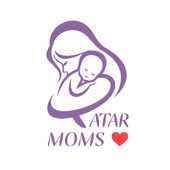Surely you are wondering, if I started the journey of breastfeeding, how long should it continue? three months? six months? a year? Or several years?
The World Health Organization (WHO) recommends that babies be breastfed exclusively for the first six months of their lives, then supplemented with other foods (known as "complementary foods") alongside their mother’s milk until they are at least two years old.
What Is Weaning?
Weaning is known as the process of stopping your baby from breast milk. Around the age of six months, you should begin weaning your baby by introducing complementary foods alongside your breast milk. Weaning continues until other foods and drinks have totally replaced breast milk.
Read about: When What, and How to Introduce Solid Foods
When should I start weaning my child?
At about 6 months, your baby will be ready to eat solid food because he will need other foods to meet his growing nutritional needs. Breastfeeding should be continued alongside new meals.
When your baby is ready to start eating solid foods, he:
- He appears to be hungry earlier than usual.
- He can sit up without help and has strong neck muscle control.
- Holds food in his mouth rather than immediately pushing it out on his tongue.
- When others are eating, he shows interest.
- He opens his mouth when he sees food.
- He can indicate that he does not want food.
There are three options for weaning:
- Natural (child-led)
- Planned (mother-led)
- Partial wean
The first one happens when your baby starts to eat more types of solid meals while still breastfeeding on demand. This is known as natural weaning or "child-led weaning." With this method, you follow your baby's cues and wean him at her pace. Natural weaning babies often quit breastfeeding between the ages of 2 and 4.
On the other hand, when moms decide to begin the weaning process, it is known as "planned weaning" or "mother-led weaning."
A "partial wean" is when one or more feedings are replaced with a cup or bottle while breastfeeding is continued at other times. If you need to return to work or school but still want to breastfeed, this is a good option. Even if you are separated from your baby during the day, you can continue breastfeeding.
How do I wean my baby?
Weaning your baby is up to you and your baby. Just try to follow your baby's cues. Whenever you and your baby are ready to wean, there are a few things you can do to make it a more pleasant experience for both of you:
- Weaning should be done gradually, over several weeks, months, or even years, to make it easier for you and your baby.
- Only in the most serious of situations should a sudden wean be considered.
- It's up to you and your baby to set the pace, but in general, the slower the better.
- After about 6 months of age, you can start with a liquid (such as extracted breast milk) in a bottle or cup, or a supplemental food. Someone else, such as your baby's father, may need to provide your baby with a feed in order to accept it.
- Keep an eye on the cues that your baby gives you. For example, he'll like to breastfeed if you sit in the same chair you do while you're breastfeeding.
- Engage him in a fun play activity or an outing during the times that you used to breastfeed.
- Avoid sitting in your nursing positions or wearing your usual nursing clothes.
- If your youngster is adjusting to another change, postpone weaning. Weaning your child when he is teething, for example, may not be a good idea.
- If your child is under the age of one year, try introducing a bottle or cup when you would normally be breastfeeding. If he is older than 1 year, try to offer him healthy food, a cup, or a cuddle.
Feelings You Might Have
Weaning is a difficult decision for many mothers since it gives a child more freedom and flexibility, as well as the satisfaction of achieving a goal. But, on the other hand, it is a private activity that builds a unique link between mother and child, which some women find difficult to let go of.
Finally, weaning is an important physical, hormonal, and emotional shift for you both, and you have to do it with thought and care.
 FREE DELIVERY FOR ORDERS ABOVE 100 QAR
FREE DELIVERY FOR ORDERS ABOVE 100 QAR DELIVERY WITHIN 3 HOURS
DELIVERY WITHIN 3 HOURS APPLE PAY AND CARD PAYMENT AVAILABLE
APPLE PAY AND CARD PAYMENT AVAILABLE



